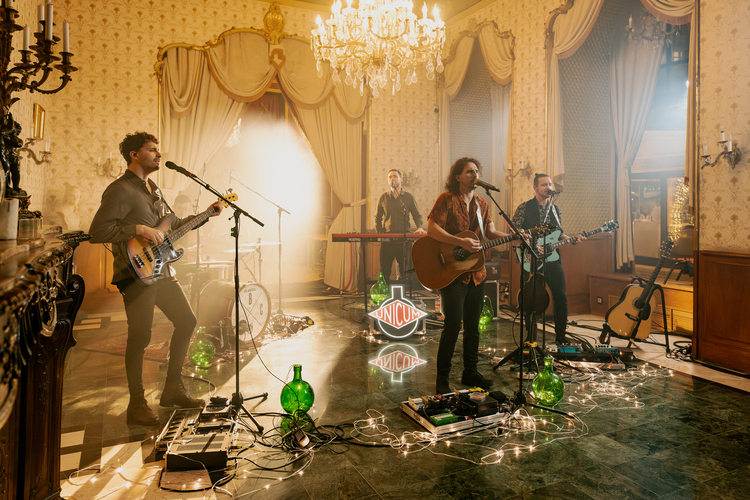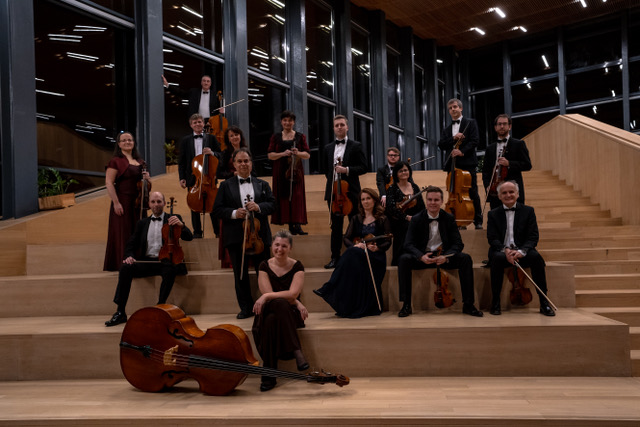Placido Domingo to Reopen Opera House in Private Gala
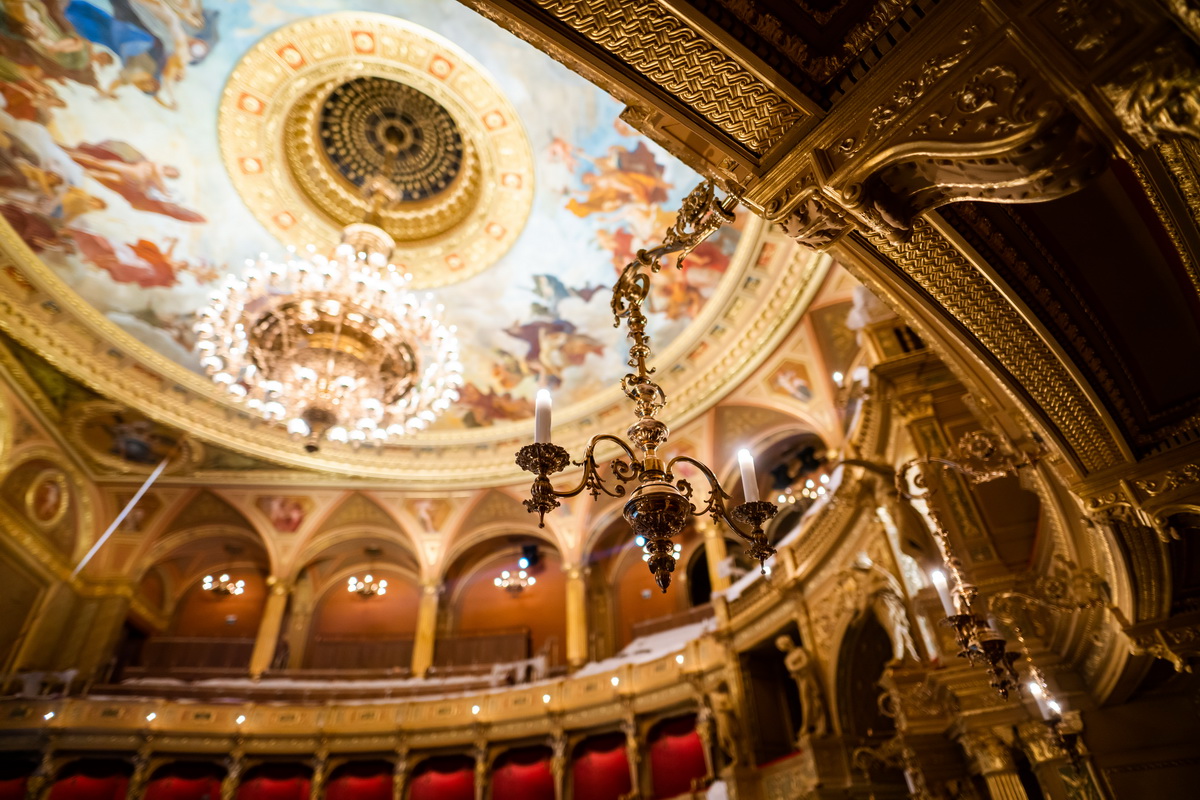
On my wanderings through Budapest, I have grown ever more curious about what exactly has been going on behind the corrugated iron surrounding the Opera House on Andrássy Avenue since 2017.
Opened on Sep. 27, 1884, the Opera House has attracted opera and ballet lovers ever since. Even closed, the Neo-Renaissance palace designed by Miklós Ybl has drawn a steady stream of tourists wanting to selfie in front of one of Budapest’s most important historical monuments.
Ybl designed a structure whose architecture and decorations express the power of music, illustrated by stories from mythology. From the very beginning, it contributed richly to opera itself. Bartók’s “Bluebeard’s Castle” and the “Wooden Prince,” as well as all of Zoltán Kodály’s stage works, were first performed here. The Hungarian State Opera Orchestra gave world premieres to more than 100 works, including the 1889 premiere of Mahler’s Symphony No. 1 when he was the music director.
The building was last renovated between 1980 and 1984. Which begs the question, how was opera regarded under socialism? As far as I’ve been able to discover through extensive Googling, opera, if it did not thrive, at least survived. The great Plácido Domingo, who will perform at the Gala Reopening on March 12, first appeared at the Hungarian State Opera as Cavaradossi in Puccini’s “Tosca” in 1973.
In 2017, it became clear that the Opera House’s stage engineering, auditorium acoustics and historical decorations required substantial work. The function of some of the rooms also needed to be rethought. As is probably the way of all these things, the government finally decided that a complete restoration was in order.
Rather than being shut for between one and two years, the Opera House was closed for restoration for almost five after the government decided on a complete makeover.
Replacing the stage engineering system installed in 1984 was the priority. It now meets today’s requirements for faster maneuverability, lower noise levels, variability, and exact fitting. Lighting and the fly system (the ropes, blocks, counterweights and other devices that allow a stage crew to move things like curtains, lights, scenery, stage effects and people around) were also updated.
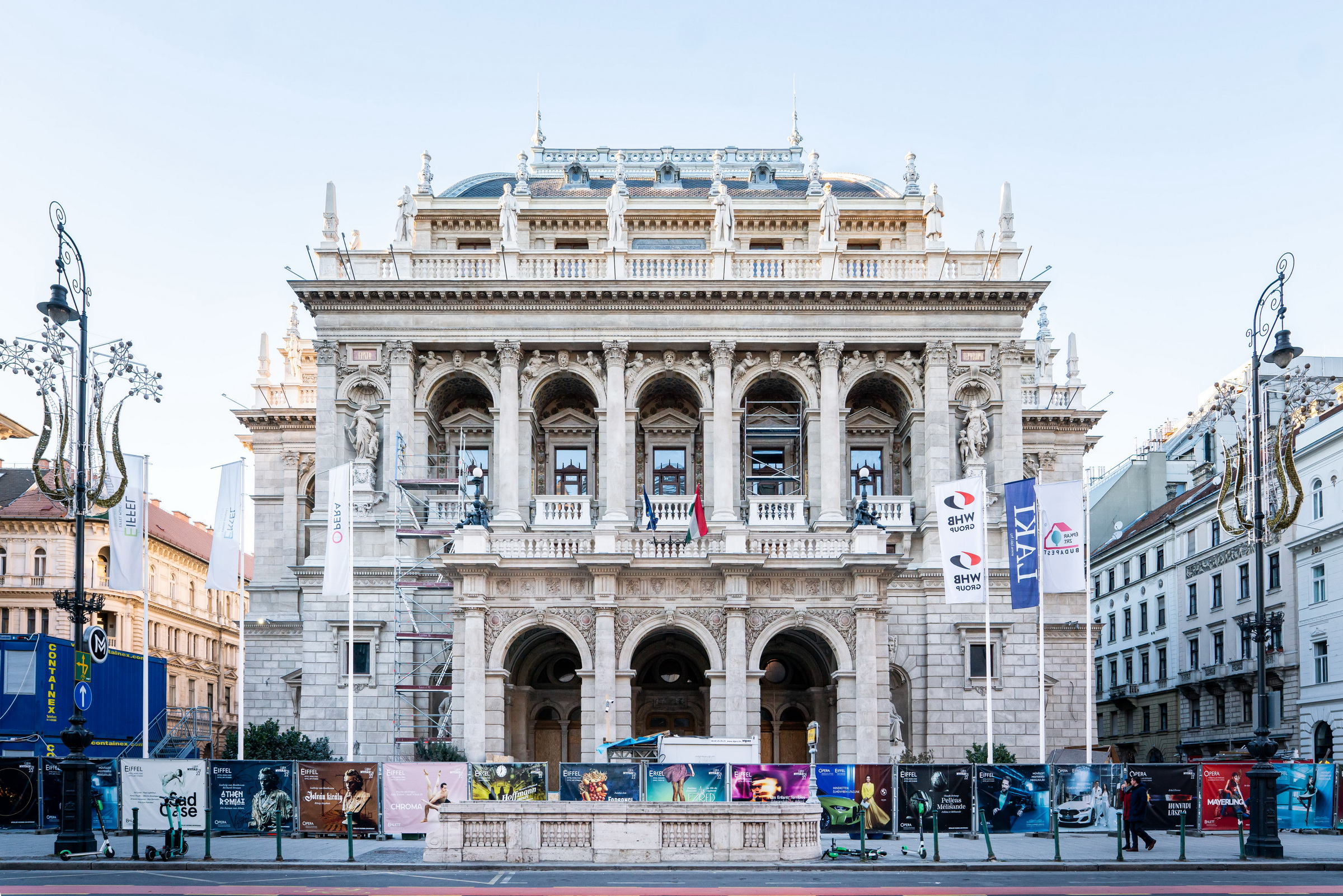
Improved Acoustics
The acoustics were improved by returning the orchestra pit to its original size and reviving its use as a reverberation chamber. It has also been made mobile. The amount of drapery was reduced and an abat-voix, which projects sound, was installed behind the stage.
Judging by the photos the Opera House kindly sent me, the restored interiors are, to reclaim the word from real estate agents, stunning.
Floors in the public areas have also been renovated, with the original beauty of the woodwork brought back to life. Marble doorframes in the main staircase have been made glorious again. The ceiling fresco and chandelier are sure to attract the wandering eye.
During such an ambitious renovation, the arrival of COVID-19 didn’t help. When it hit, efforts and finances were focused on building and opening the Eiffel Art Studios. This is the Hungarian State Opera’s new rehearsal, manufacturing and warehouse area built on the ruins of the old Northern Railway Maintenance and Engineering Workshop, a system of vast covered spaces unique in Europe.
Starting in September 2020, the Opera provided more than 100 free live-streamed performances, chamber concerts, and opera crossovers from the Eiffel Art Studios’ Sándor Hevesi Stage.
Many of the rooms that served the behind-the-scenes work of the Hungarian State Opera were moved to the Eiffel Art Studios, making way for a rehearsal room and home stage for dress rehearsals.
Rehearsals themselves never stopped, meaning that Opera House audiences will be able to enjoy new productions from the moment it opens with that gala featuring Maestro Domingo.
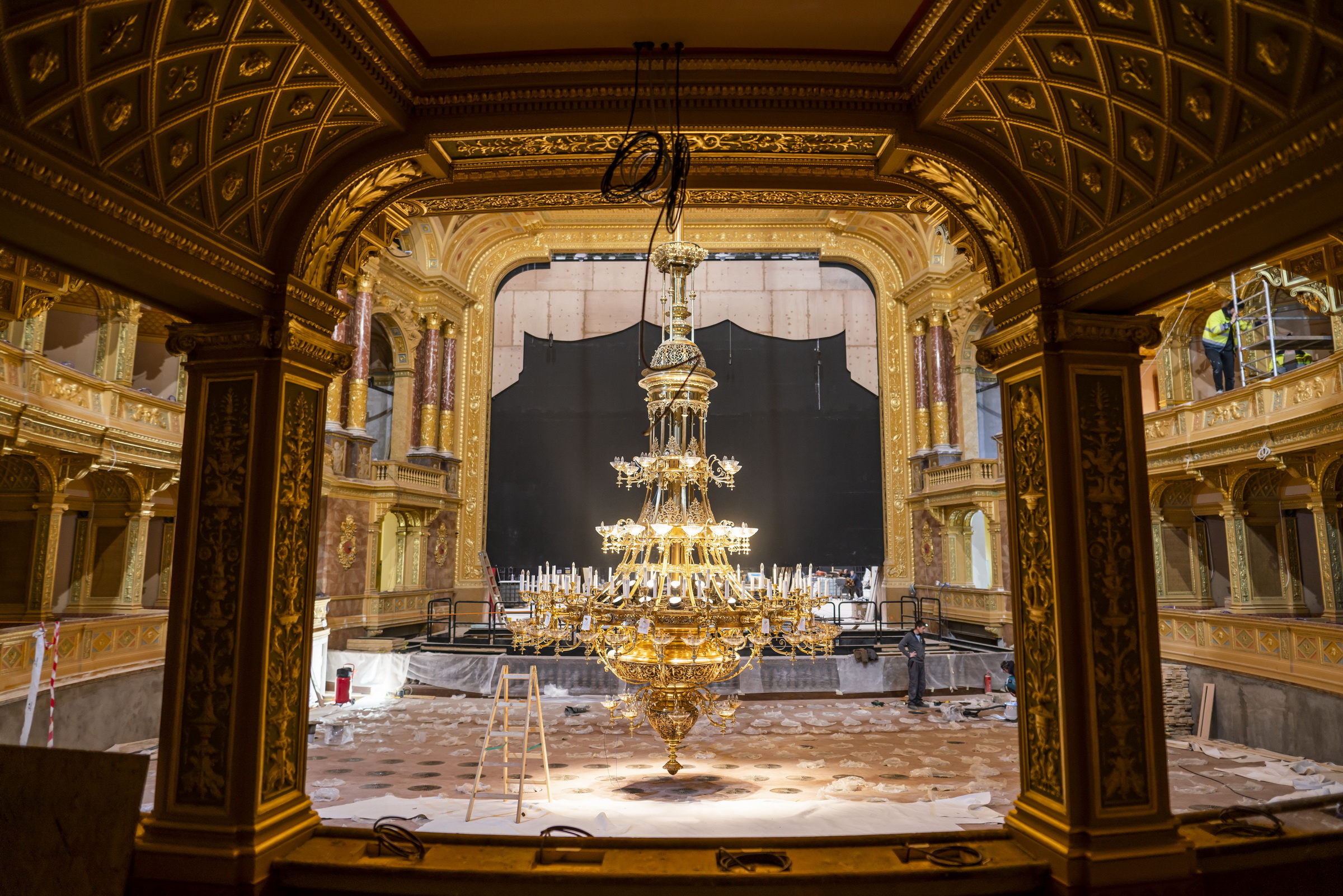
‘Friend and Ally’
Described by the Opera House as a “friend and an invaluable ally to the Hungarian State Opera for half a century,” Domingo will appear at the Reopening Gala to conduct three pieces rooted in Hungarian music by Berlioz, Strauss, and Brahms. In April, he will return to sing a complete opera as Simon Boccanegra.
From the gala on, the Opera House will present a program intended to restore it to what the organizers describe as its “rightful place” as one of the jewels of the international opera scene.
On March 13, a new production of “László Hunyadi” by Ferenc Erkel will be staged by general director Szilveszter Ókovács, making his directorial debut. Based on the piece’s original version, the performance will also showcase the artistic and technical virtuosity of the modernized stage machinery of the Opera House.
The Hungarian National Ballet returns to the historic building with a new production of Kenneth MacMillan’s lavish “Mayerling” on March 14. Wagner fans will flock to premiers of “Parsifal,” presented by artistic director András Almási-Tóth, and “Götterdämmerung” directed by Géza M. Tóth.
Repertoire productions include “Die Frau ohne Schatten,” “Mefistofele,” “Simon Boccanegra,” “Porgy and Bess,” “Don Carlo,” “Le nozze di Figaro,” “Andrea Chénier,” “La fanciulla del West,” “Un ballo in Maschera” and “Die Zauberflöte.” There will also be performances of the ballet pieces “Romeo and Juliet” and “Onegin.”
There is plenty to look forward to then, although the gala reopening is a private affair. In 1884, the cost of attending the opening ceremony was the equivalent of two horses. A crowd of people who couldn’t afford this demonstrated on the streets outside. They wanted to see not just the exterior but the lavish interior that taxpayers’ forints had funded. I doubt we’ll see the same this time.
The full 2022/23 season will be announced today, Friday, March 11. Find out more at opera.hu.
This article was first published in the Budapest Business Journal print issue of March 11, 2022.
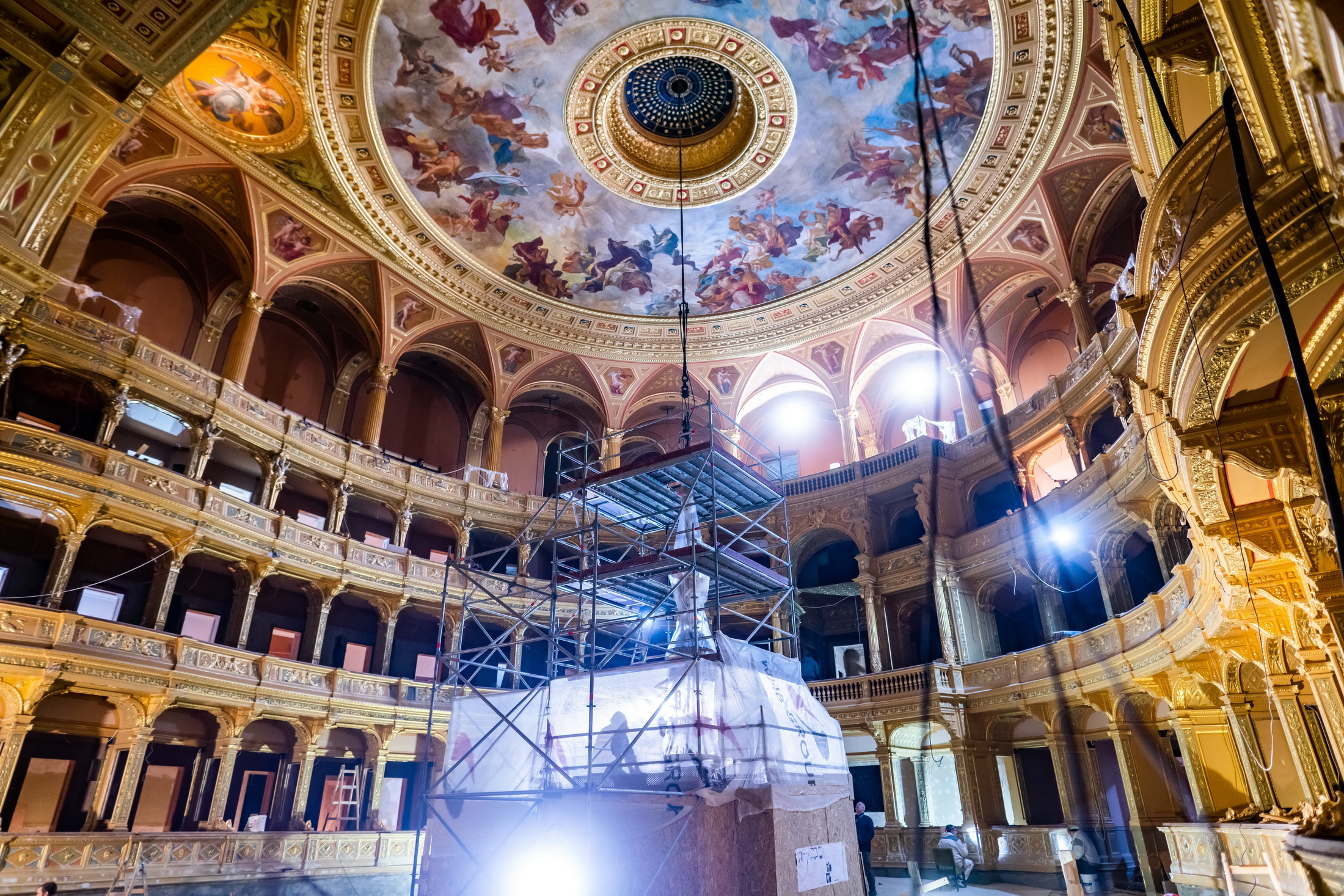
SUPPORT THE BUDAPEST BUSINESS JOURNAL
Producing journalism that is worthy of the name is a costly business. For 27 years, the publishers, editors and reporters of the Budapest Business Journal have striven to bring you business news that works, information that you can trust, that is factual, accurate and presented without fear or favor.
Newspaper organizations across the globe have struggled to find a business model that allows them to continue to excel, without compromising their ability to perform. Most recently, some have experimented with the idea of involving their most important stakeholders, their readers.
We would like to offer that same opportunity to our readers. We would like to invite you to help us deliver the quality business journalism you require. Hit our Support the BBJ button and you can choose the how much and how often you send us your contributions.






